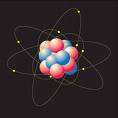Related Flashcards
Cards In This Set
| Front | Back |
|
The subatomic particles that make up atoms are protons, neutrons, and ____________________.
|
 ELECTRONS |
|
Most of the mass of an atom is concentrated in the ____________________.
|
NUCLEUS
|
|
If an atom contains 15 protons, it must contain 15 ____________________.
|
ELECTRONS
|
|
Because they have the same number of protons and electrons, all isotopes of an element have the same ____________________ properties.
|
CHEMICAL
|
|
Unlike the resulting stable compound—table salt—the two gases making up this compound are ____________________.
|
EXPLOSIVE; REACTIVE
|
|
A chemical bond formed by the transfer of electrons is a(an) ____________________ bond.
|
IONIC
|
|
Due to _________________________ forces, the structure of a gecko’s feet enables it to climb up vertical surfaces.
|
VAN DER WAALS
|
|
A water molecule is polar because there is an uneven distribution of electrons between the oxygen and the ____________________ atoms.
|
HYDROGEN
|
|
Water’s ____________________ allows it to dissolve compounds such as table salt (NaCl).
|
POLARITY
|
|
The stomach produces a(an) ____________________ to help digest food.
|
ACID
|
|
The pH scale is a measurement system that indicates the concentration of ____________________ in solution.
|
IONS
|
|
Complex carbohydrates are to monosaccharides as polymers are to ____________________.
|
MONOMERS
|
|
The elements or compounds produced by a chemical reaction are known as ____________________.
|
PRODUCTS
|
|
Chemical reactions that ____________________ energy will not occur without a source of energy.
|
ABSORB
|
|
The name of an enzyme usually ends in ____________________.
|
-ASE
|



